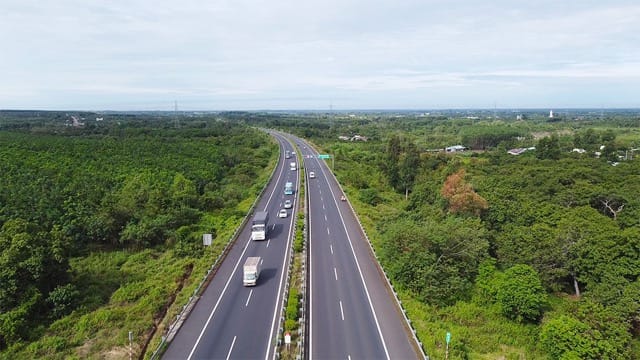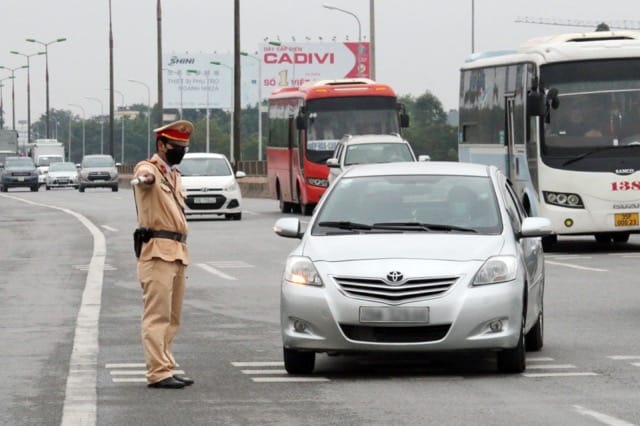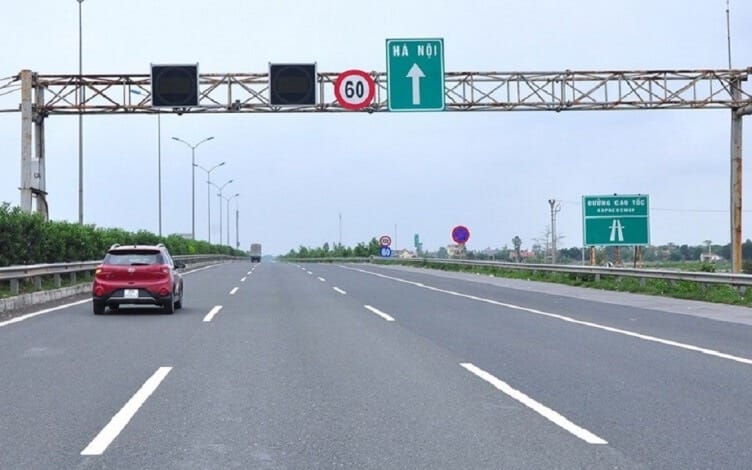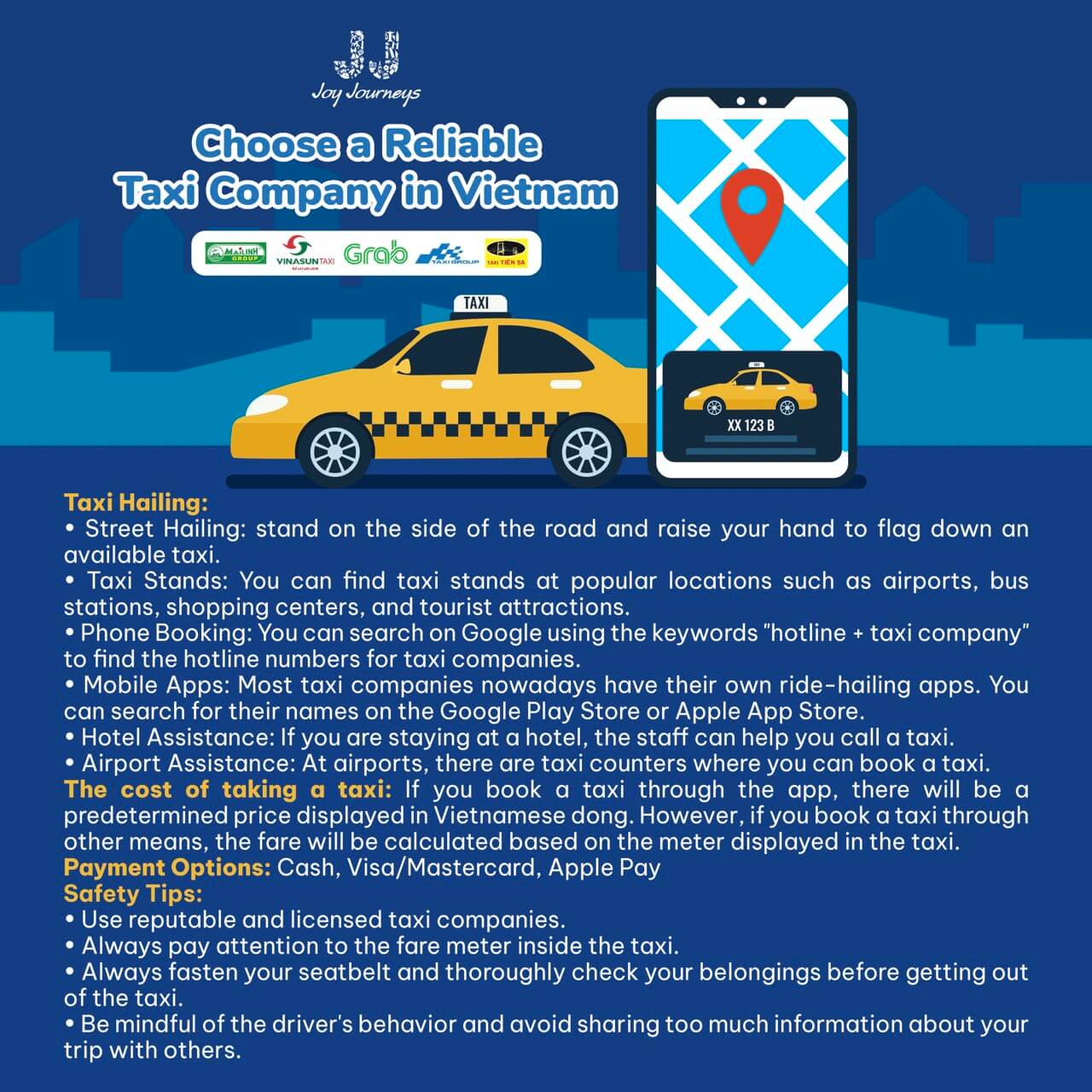Vietnam roads are like the heartbeats of the country’s transportation systems, connecting regions for both locals and fellow adventurers like you!
This article will be a travel companion, offering delightful insights into Vietnam’s road network, highlighting major highways and scenic routes, keeping you safe with road regulations, and showing you all the exciting transportation options for the journey ahead!
See more: Discover Vietnam Transportation
Contents
- 1 Vietnam Roads: Exploring the Country’s Network
- 1.1 Overview of the Vietnam Road Network
- 1.2 Infrastructure and Development of Roads in Vietnam
- 1.3 Major Highways and Expressways
- 1.4 Scenic Drives and Popular Routes in Vietnam
- 1.5 Must-Visit Destinations Along Popular Routes
- 1.6 Vietnam Highway speed limit
- 1.7 Scenic Drives and Popular Routes in Vietnam
- 1.8 Must-Visit Destinations Along Popular Routes
- 1.9 Vietnam Highway speed limit
- 2 Road Safety and Regulations in Vietnam
- 3 Exploring Vietnam’s Transportation Options
- 4 Conclusion
- 5 Frequently Asked Questions
Vietnam Roads: Exploring the Country’s Network
Vietnam, with its diverse landscapes and vibrant culture, is a country that beckons to be explored. One of the best ways to discover its hidden gems and natural beauty is by hitting the road.
It’s important to note that in Vietnam, cars are driven on the left side, so make sure to keep that in mind as you embark on your road trip adventure.
Overview of the Vietnam Road Network
Vietnam’s road network is a web that connects the nation from north to south and east to west. Whether you’re in bustling cities or remote villages, you’ll find well-maintained roads that provide access to various regions. From the bustling streets of Hanoi to the tranquil countryside, Vietnam’s road network spans urban and rural areas, making it accessible for travelers from all walks of life.
Infrastructure and Development of Roads in Vietnam
Vietnam is in a constant state of growth and development, and its road infrastructure is no exception. Ongoing projects across the country aim to enhance the road system, making travel more efficient and comfortable. These efforts are vital for the nation’s progress and for ensuring smooth journeys for both locals and tourists.
Major Highways and Expressways
Vietnam’s highways and expressways are the lifelines of the nation’s transportation system. These roads play a pivotal role in connecting major cities, facilitating trade, and boosting economic growth.

Vietnam’s highways and expressways are the lifelines of the nation’s transportation system. These roads play a pivotal role in connecting major cities, facilitating trade, and boosting economic growth. Notable among these routes are:
- Ho Chi Minh City – Long Thanh – Dau Giay Expressway: This expressway connects Ho Chi Minh City to Dau Giay (Dong Nai province) and is a key transportation route in the southern part of the country.
- Trung Luong Highway: This highway links Ho Chi Minh City with My Thuan and is an important route for transportation in the Mekong Delta region.
- Dau Giay – Phan Thiet Expressway: This expressway offers convenient access to the coastal city of Phan Thiet, known for its beautiful beaches.
- Chi Lang – Bac Giang Expressway: Connecting Chi Lang in Lang Son province to Bac Giang, this expressway serves as a vital link in the northern part of Vietnam.
- Da Nang – Quang Ngai Expressway: This expressway runs along the central coast, connecting Da Nang to Quang Ngai province, facilitating travel and commerce in the region.
Furthermore, Vietnam is making concerted efforts to complete the north-south expressway network, connecting Lang Son province in the north to Ca Mau in the south, before 2030. This ambitious project aims to further enhance travel infrastructure, foster economic development, and promote tourism services throughout the country. These extensive road networks are essential for both local and international travelers looking to explore Vietnam’s diverse landscapes and vibrant culture.
To discover Vietnam roads by yourself, understanding driving in Vietnam is must.
Scenic Drives and Popular Routes in Vietnam
For those seeking adventure and breathtaking scenery, Vietnam offers an array of picturesque road trips. The country’s landscapes range from lush rice paddies to towering mountain ranges and pristine coastlines. Scenic routes like the Hai Van Pass and the Mekong Delta road trip promise unforgettable views and encounters with local culture.
Must-Visit Destinations Along Popular Routes
As you journey through Vietnam’s roads, you’ll encounter a treasure trove of destinations that showcase the country’s rich heritage and natural wonders. From the ancient town of Hoi An to the captivating Halong Bay, these stops along your road trip will immerse you in Vietnam’s cultural, historical, and natural attractions. Don’t forget to explore local cuisine and traditions along the way.
Vietnam Highway speed limit
The speed limit on highways in Vietnam can vary depending on the specific type of road and location. Typically, on major highways in Vietnam, the speed limit for cars falls within the range of approximately 80 to 120 kilometers per hour (about 49.7 to 74.6 miles per hour). However, it’s essential to pay attention to posted speed limit signs, as they may vary in certain areas due to road conditions, construction zones, or local regulations.

Always adhere to the posted speed limits, drive at a safe and appropriate speed for the road conditions, and exercise caution, especially in areas with heavy traffic or challenging terrain. It’s essential to prioritize safety when driving on Vietnam’s highways.
Scenic Drives and Popular Routes in Vietnam
For those seeking adventure and breathtaking scenery, Vietnam offers an array of picturesque road trips. The country’s landscapes range from lush rice paddies to towering mountain ranges and pristine coastlines. Scenic routes like the Hai Van Pass and the Mekong Delta road trip promise unforgettable views and encounters with local culture.
Must-Visit Destinations Along Popular Routes
As you journey through Vietnam’s roads, you’ll encounter a treasure trove of destinations that showcase the country’s rich heritage and natural wonders. From the ancient town of Hoi An to the captivating Halong Bay, these stops along your road trip will immerse you in Vietnam’s cultural, historical, and natural attractions. Don’t forget to explore local cuisine and traditions along the way.
Vietnam Highway speed limit
The speed limit on highways in Vietnam can vary depending on the specific type of road and location. Typically, on major highways in Vietnam, the speed limit for cars falls within the range of approximately 80 to 120 kilometers per hour (about 49.7 to 74.6 miles per hour). However, it’s essential to pay attention to posted speed limit signs, as they may vary in certain areas due to road conditions, construction zones, or local regulations.
Always adhere to the posted speed limits, drive at a safe and appropriate speed for the road conditions, and exercise caution, especially in areas with heavy traffic or challenging terrain. It’s essential to prioritize safety when driving on Vietnam’s highways.
Road Safety and Regulations in Vietnam
Understanding the rules and guidelines for safe travel. Explore key topics such as licensing requirements, traffic laws, and vehicle regulations to ensure a secure and enjoyable journey on Vietnam’s roads.
Understanding Road Rules and Traffic Regulations
When embarking on a journey through Vietnam’s scenic roads, it’s essential to familiarize yourself with the country’s traffic laws. These regulations are in place to ensure your safety and the orderly flow of traffic.
Vietnam’s traffic laws cover a wide range of aspects, including speed limits, right of way, and parking rules. Be sure to adhere to these laws to avoid fines and accidents during your travels.
Pay special attention to traffic signs and signals. Understanding their meanings can make your journey smoother and safer. The shape, color, and symbols on these signs convey specific instructions that are important to follow.
If you are worried about driving in Vietnam, you can use Grab to get around.

Navigating the lively traffic in Vietnam can be an adventure in itself. When crossing roads, take it step by step. Make your intentions clear to drivers, and walk at a steady pace. Maintaining eye contact when possible can help drivers anticipate your movements.
Coping with traffic congestion and sharing the road with countless motorbikes is a daily reality in Vietnam. Patience is key. Avoid sudden maneuvers and be aware of motorbikes weaving through traffic. Stay vigilant, use your horn or lights to signal intentions, and stay focused on your surroundings.
Road Safety Considerations for Foreign Tourists
For foreign tourists exploring Vietnam, road safety is paramount. Understanding local traffic laws and regulations is crucial for a safe and enjoyable journey. Be sure to acquaint yourself with licensing requirements, familiarize yourself with traffic violations and penalties, and always prioritize helmet use. These considerations will help ensure a smooth and secure travel experience on Vietnam’s roads.
Foreign Driver’s License Recognition:
According to Clause 10, Article 33 of Circular 12/2017/TT-BGTVT, foreigners with national driving licenses must carry out procedures to change to the corresponding Vietnamese driving license.
Traffic Violations and Penalties:
In accordance with Article 2 of the 2008 Road Traffic Law and Article 2 of Decree 46/2016, which governs penalties for administrative violations in road and rail traffic, these regulations apply to both organizations and individuals engaged in road traffic within the Socialist Republic of Vietnam. Therefore, foreigners who violate traffic laws in Vietnam will be subject to similar legal measures.
Helmet Use Requirement:
Article 30, Clause 2 of the 2008 Road Traffic Law states that individuals riding two-wheeled motorbikes, three-wheeled mopeds, and mopeds must wear helmets securely fastened with straps. This means that all passengers on motorbikes and mopeds must wear helmets and fasten the straps as per the regulations.
Road safety is of utmost importance for foreign tourists in Vietnam. Adhering to defensive driving practices, recognizing the need to convert foreign licenses, understanding traffic violations and penalties, and strictly adhering to helmet use requirements are essential for a safe and enjoyable travel experience in the country.
Exploring Vietnam’s Transportation Options
In Vietnam, transportation options abound. Buses cover extensively at a lower cost, while trains offer comfort and scenery. Motorbikes provide flexibility but demand traffic skills. Taxis, though convenient, are pricier. Tailor your choice to fit your budget and travel style.
Most Common Transportation Methods in Vietnam
When it comes to getting around Vietnam, you’ll find a variety of transportation options catering to different travel needs. Let’s explore the most commonly used means of getting from one place to another in this captivating country.
Buses: Buses are the backbone of public transportation in Vietnam. They offer extensive coverage, connecting cities, towns, and remote areas. Buses are often an affordable choice, making them popular among budget-conscious travelers. However, they may not always offer the same level of comfort and speed as other options.
Trains: Trains are a classic way to experience Vietnam’s picturesque landscapes. The railway system links major cities and scenic routes, offering a more comfortable and spacious travel experience compared to buses. Trains are a fantastic choice for those who prefer a leisurely journey and wish to savor the scenery.
Motorbikes: In Vietnam, motorbikes are a ubiquitous mode of transportation. They provide a convenient and flexible way to explore both urban and rural areas. Renting a motorbike can be an adventurous choice, but it requires confidence in navigating the country’s traffic.
Taxis: Taxis are readily available in Vietnamese cities and provide a hassle-free mode of transportation, especially for travelers with heavy luggage or those seeking comfort and convenience. While they are pricier than other options, they offer door-to-door service.
Vietnamese motorbikes are an interesting experience for your journey.

Renting Cars in Vietnam: Renting a car in Vietnam provides comfort and convenience for travelers. Major cities like Hanoi and Ho Chi Minh City have numerous rental agencies. You’ll typically need a valid international or Vietnamese driver’s license, plus additional documentation. Prices range from $30 to $100+ per day. Be prepared for varying road conditions and urban traffic.
Renting Motorbikes in Vietnam: Motorbikes and scooters are popular for city navigation and adventure. Rentals are common in tourist areas and guesthouses. Requirements include a valid international or Vietnamese driver’s license, and helmets are mandatory. Rental costs are affordable, ranging from $5 to $15 daily. Be cautious due to chaotic traffic and road conditions. Inspect the vehicle, wear helmets, and follow local traffic rules for safety.
Each of these transportation methods has its advantages and disadvantages, catering to various travel preferences and budgets.
Comparing Road Travel to Other Modes of Transport
Pros and Cons of Road Travel: Road travel in Vietnam offers a sense of freedom and adventure. You can explore off-the-beaten-path destinations and savor the spontaneity of the journey. However, road conditions may vary, and traffic congestion can be challenging in urban areas. It’s essential to be prepared for these challenges.
Comparisons to Trains: Trains provide a comfortable and scenic option for travelers. They are ideal for those who want a relaxed journey while enjoying Vietnam’s stunning landscapes. However, train schedules may be less flexible than road travel, and you might miss out on exploring certain areas accessible by road only.
Comparisons to Buses: Buses are budget-friendly and offer extensive coverage. They are suitable for travelers looking to save money and don’t mind longer travel times. However, comfort levels can vary, and the crowded nature of some buses may not appeal to all travelers.
Comparisons to Air Travel: Air travel is the fastest way to cover long distances within Vietnam. It’s perfect for travelers with limited time or those who wish to avoid lengthy road or rail journeys. However, it may not provide the same cultural immersion and scenic opportunities as ground transportation.
In the end, your choice of transportation in Vietnam will depend on your priorities, budget, and the kind of experience you seek. Road travel offers unique opportunities for exploration, while trains, buses, and air travel each have their own advantages. Consider your preferences and the nature of your journey when making your decision.
Conclusion
Vietnam’s roads beckon with a promise of adventure. They lead to breathtaking landscapes, charming towns, and cultural gems waiting to be uncovered. So, hit the road with confidence, stay safe, and let the journey be your reward. Explore, experience, and make memories that will last a lifetime in Vietnam.
Frequently Asked Questions
1/ How can I cross roads safely in Vietnam?
- Observe the traffic flow and find a gap.
- Raise your hand to signal your intention to cross.
- Walk slowly and steadily, maintaining a predictable pace.
- Keep an eye on traffic while crossing.
- Avoid sudden movements and distractions.
2/ Are there road rules and regulations in Vietnam?
- Yes, Vietnam has road rules and regulations in place to ensure safety.
- These include speed limits, right of way, and parking rules.
- Familiarize yourself with these laws to have a smooth and safe journey.
3/ What are the road conditions like in Vietnam?
- Road conditions in Vietnam can vary.
- Major highways are well-maintained, but some rural areas may have potholes and uneven surfaces.
- Be prepared for diverse road conditions, especially in less-traveled regions, and adapt your driving accordingly.


Related Posts
Saigon’s “Flower Market Replica”: Where To Find Them
Ho Chi Minh City’s floral charm is not limited to its bustling wholesale markets. Imagine wandering through a place where vibrant petals, fragrant blooms, and the spirit of traditional Vietnamese markets come alive—without the overwhelming crowds. A flower market replica captures that magic, blending the beauty of fresh flowers with the charm of a curated, […]
Is it Safe to Travel to Vietnam Right Now? A Complete 2025 Guide
Vietnam has emerged as one of Southeast Asia’s most captivating destinations, drawing millions of visitors annually with its rich culture, stunning landscapes, and incredible cuisine. However, many travelers still ask: Is it safe to travel to Vietnam right now? This comprehensive guide provides you with everything you need to know about Vietnam travel safety in […]
Ho Chi Minh Cu Chi Tunnels Tour: The Ultimate Guide
The Cu Chi Tunnels stand as one of Vietnam’s most remarkable historical sites, offering visitors a profound glimpse into the ingenuity and resilience displayed during the Vietnam War. For travelers, a Ho Chi Minh Cu Chi tunnels tour represents an essential experience that combines education, adventure, and deep cultural understanding. This comprehensive guide will help […]